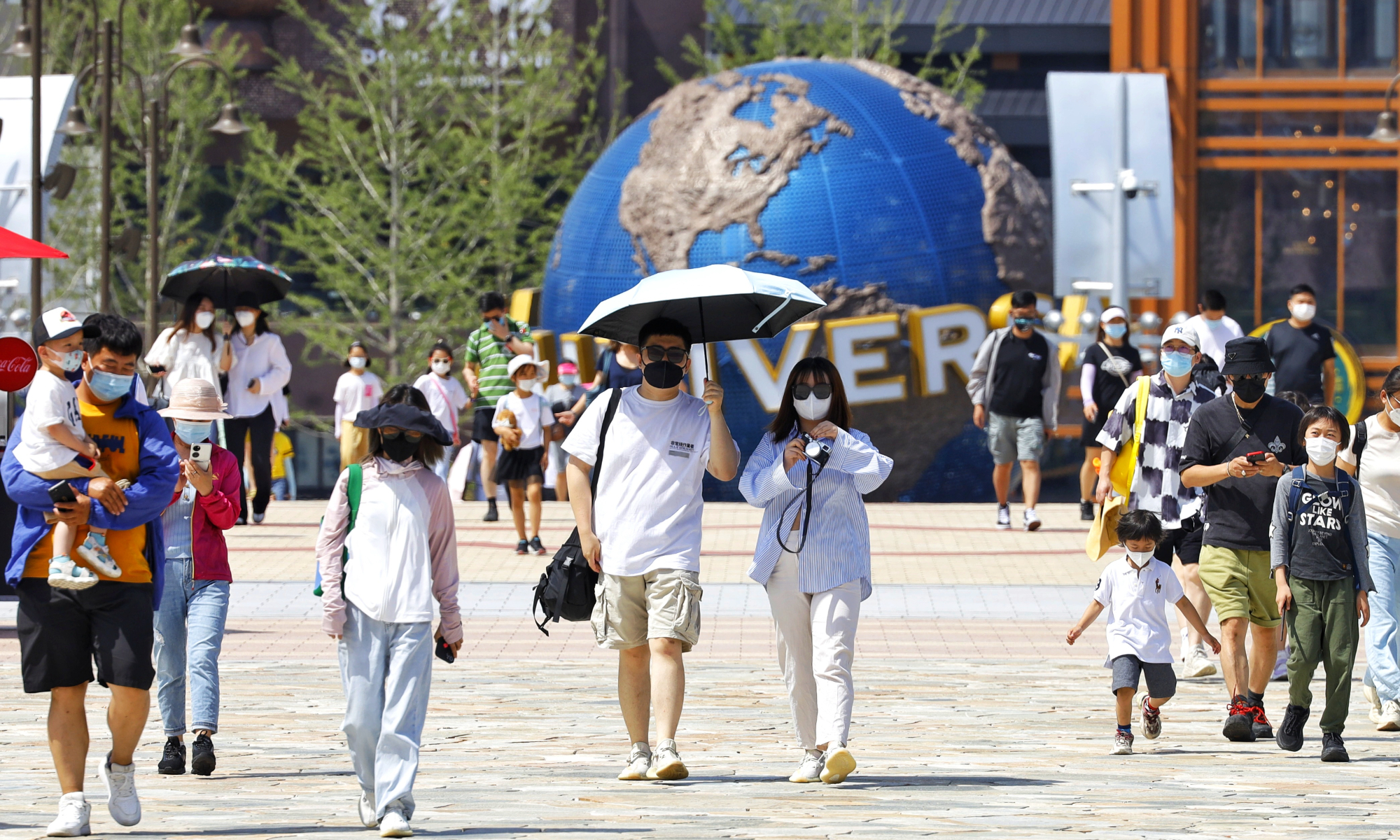
Universal Beijing Resort Photo: Li Hao/GT
Beijing and Shanghai - China's top two cities - are generally getting back on track after a months-long Omicron fight. On Sunday, Beijing announced the resumption of on-site classes for primary and secondary schools, while Shanghai decided to resume dine-in service in some communities after declaring victory in a three-month battle against the variant.
Nonetheless, the cities' health authorities and experts warned that risks cannot be completely ruled out. At Sunday's news conferences, Beijing and Shanghai each reported two new COVID-19 infections.
Experts called for precise epidemiological surveys, monitoring of key groups and swift responses as important measures to curb rebounds and consolidate epidemic prevention and control results.
The two metropolises were among a group across China that had adopted stringent measures to stop the spread of the Omicron wave. With these measures, both cities have successfully curbed the fast spread of the Omicron epidemic and gradually brought normal production and life back to the cities.
However, there is no room for slacking off in epidemic prevention and control, since personnel flows will further rise as normal production and life gradually resume in the city and in-person classes for kindergartens and primary and secondary schools restart, Xu Hejian, the spokesperson of the Beijing government, stressed at a Sunday press briefing.
Shanghai also announced on Sunday the resumption of dine-in services in an orderly manner in communities starting from Wednesday, as long as there is no medium-risk area in the region and no new infections reported within a week.
By imposing a two-month citywide lockdown that was lifted on June 1, Shanghai authorities finally declared victory against the latest round of the outbreak on Saturday following two consecutive days of zero new infections reported in the city.
Although victory was declared, nucleic acid testing was still carried out in 13 districts over the weekend as there were 13 medium-risk areas in the city as of Sunday, with two more medium-risk areas added on Sunday afternoon. Local authorities also decided to lower a medium-risk area to a low-risk one on Monday.
Experts said that epidemiological investigations should be the focus of follow-up work of epidemic prevention and control to balance hard-won achievements against economic and social development.
Wang Guangfa, a Beijing-based respiratory expert, told the Global Times on Sunday that a principle of epidemic prevention and control is that epidemiological investigation is supposed to curb a flare-up in the smallest range in no time as the most economic and effective method.
Wang said that monitoring of at-risk groups and personnel at key positions, such as people working at ports and patients with high fevers and respiratory symptoms, combined with a quick emergency response, should be the focus of consolidating the epidemic prevention achievements.
Liu Xiaofeng, deputy head of the Beijing's Center for Disease Prevention and Control, said at a press conference on Sunday that the achievements of epidemic prevention and control were not reached easily, so that responsibility has to be strictly implemented and slackening, loopholes and rebounds must be prevented, with management focused on key areas, industries and at-risk groups.

